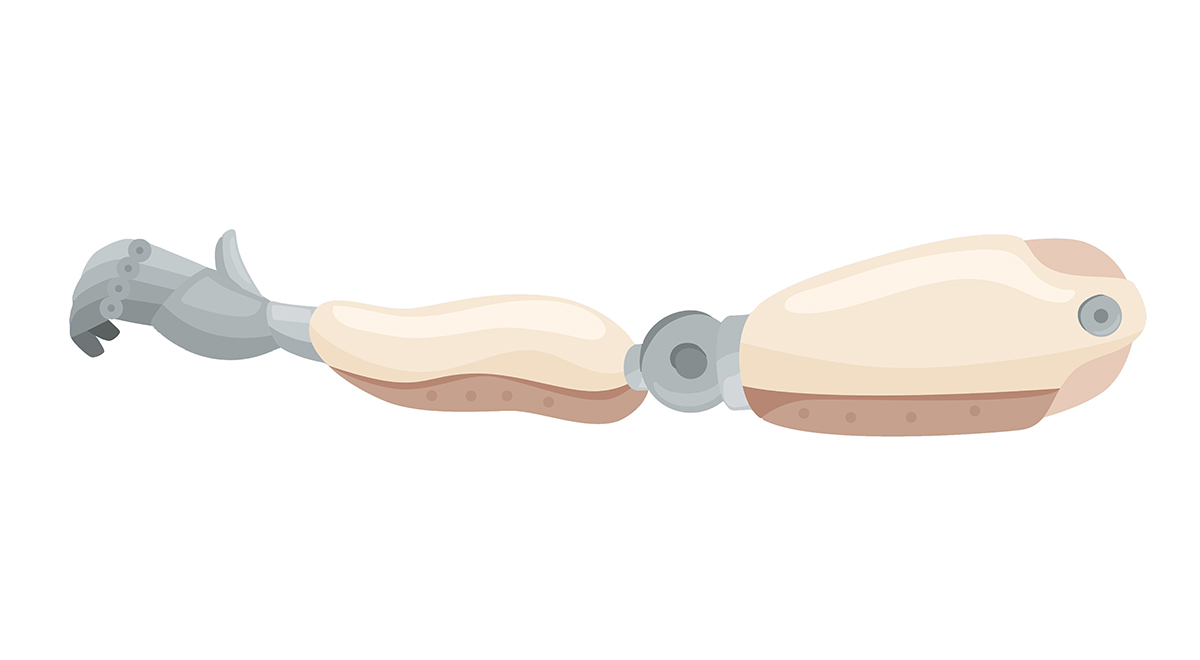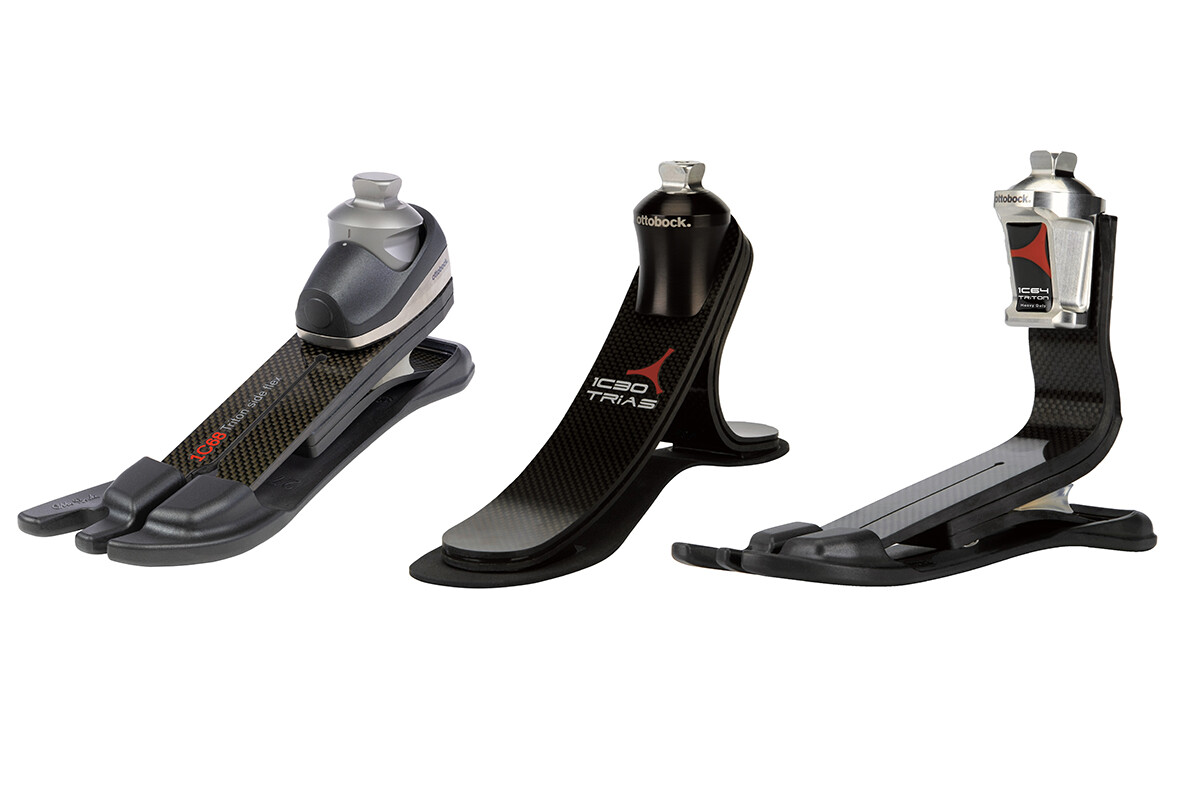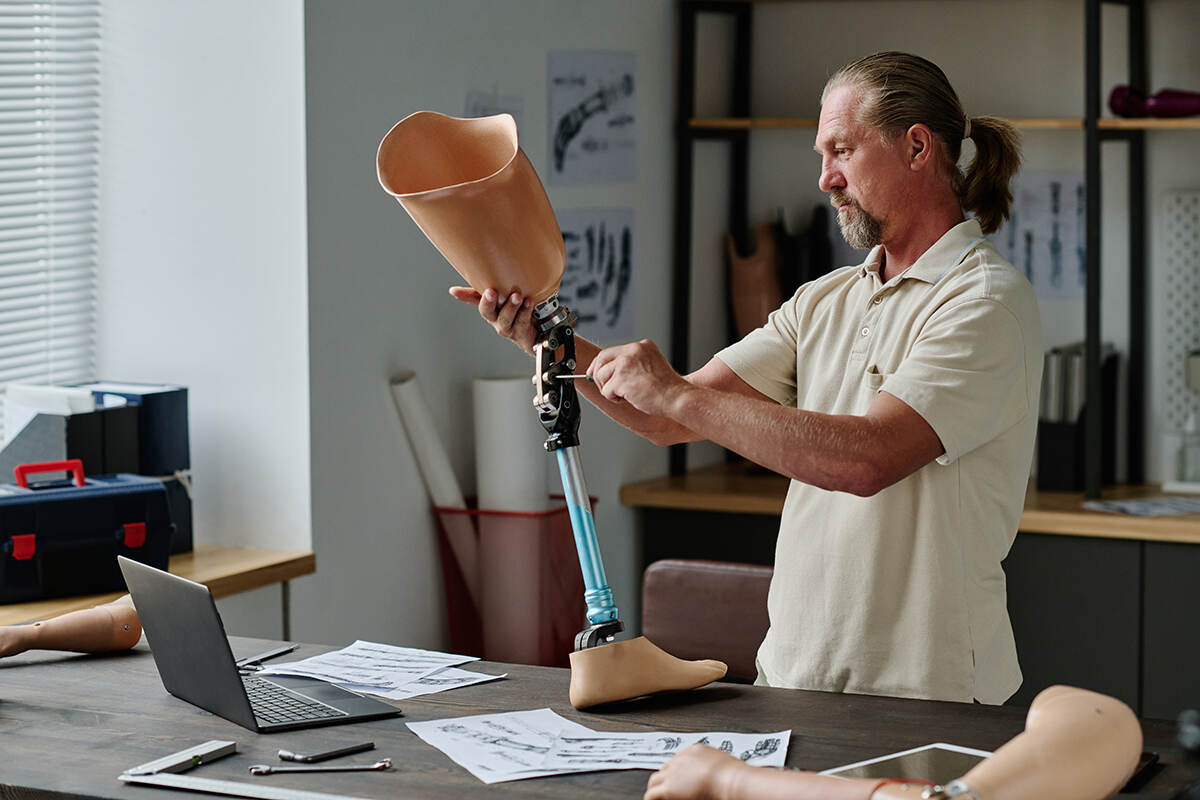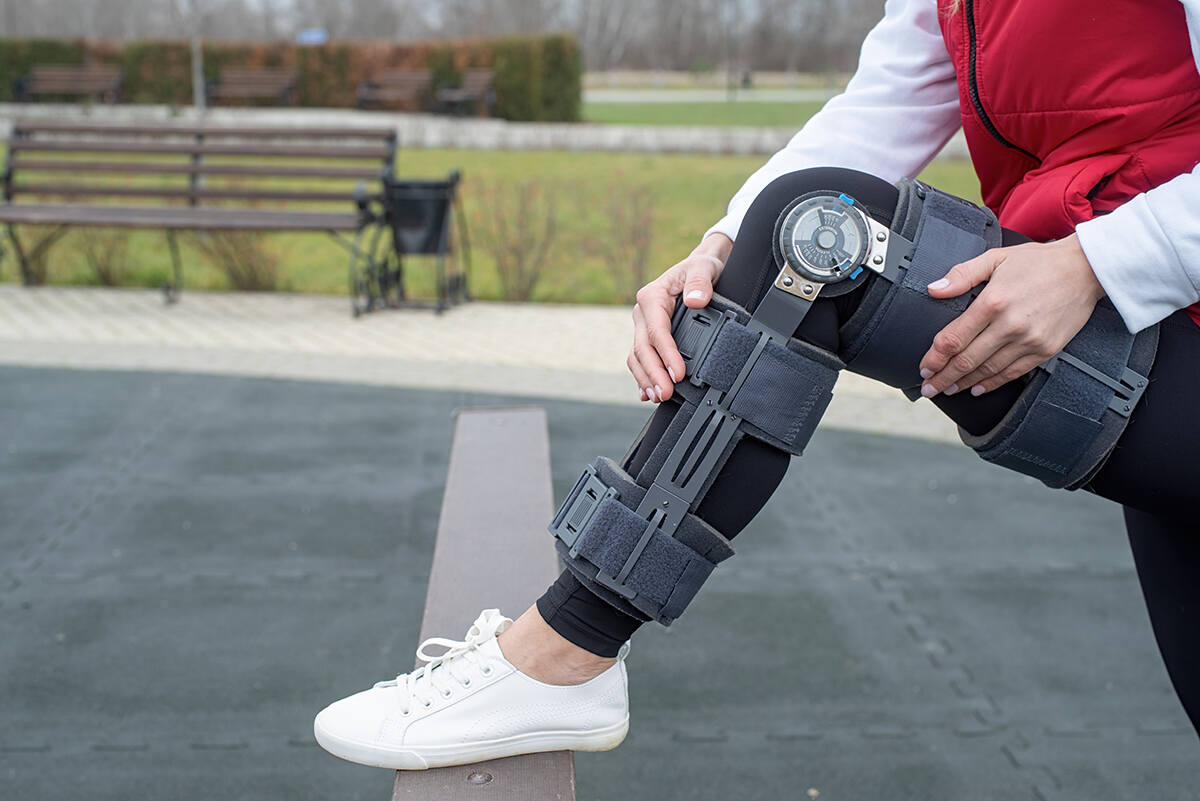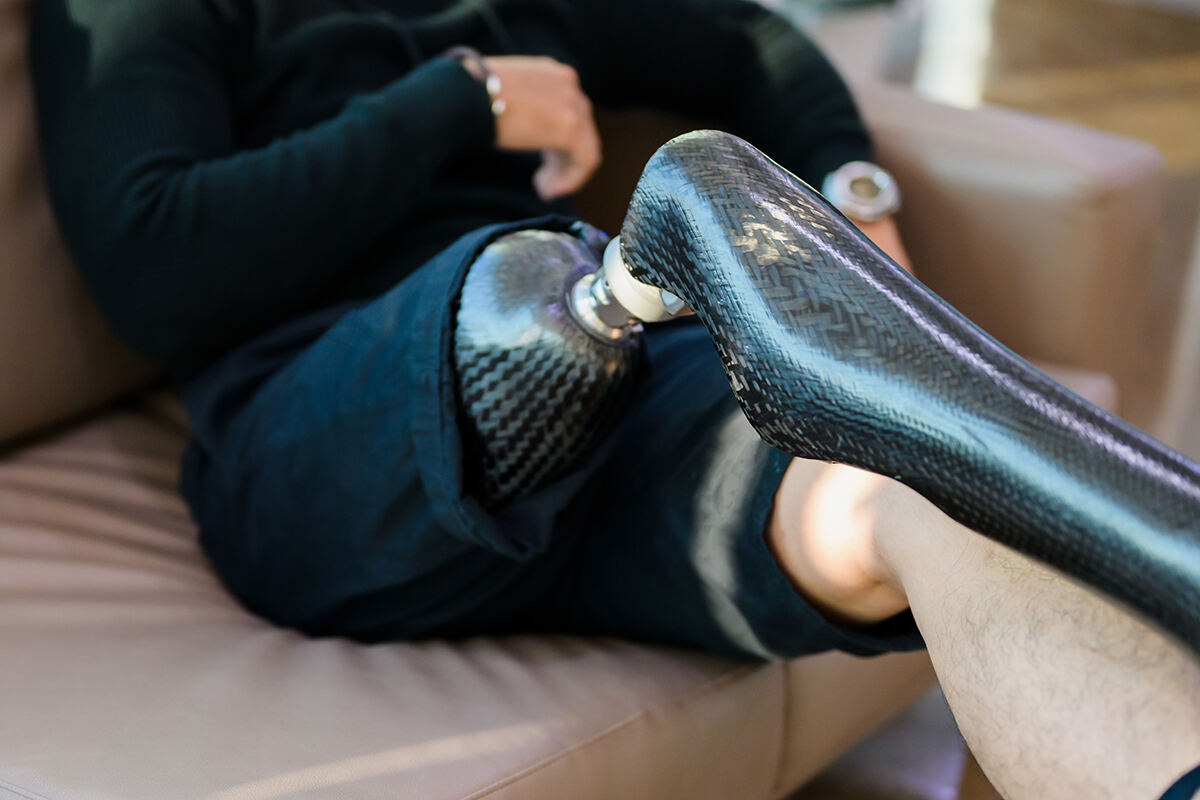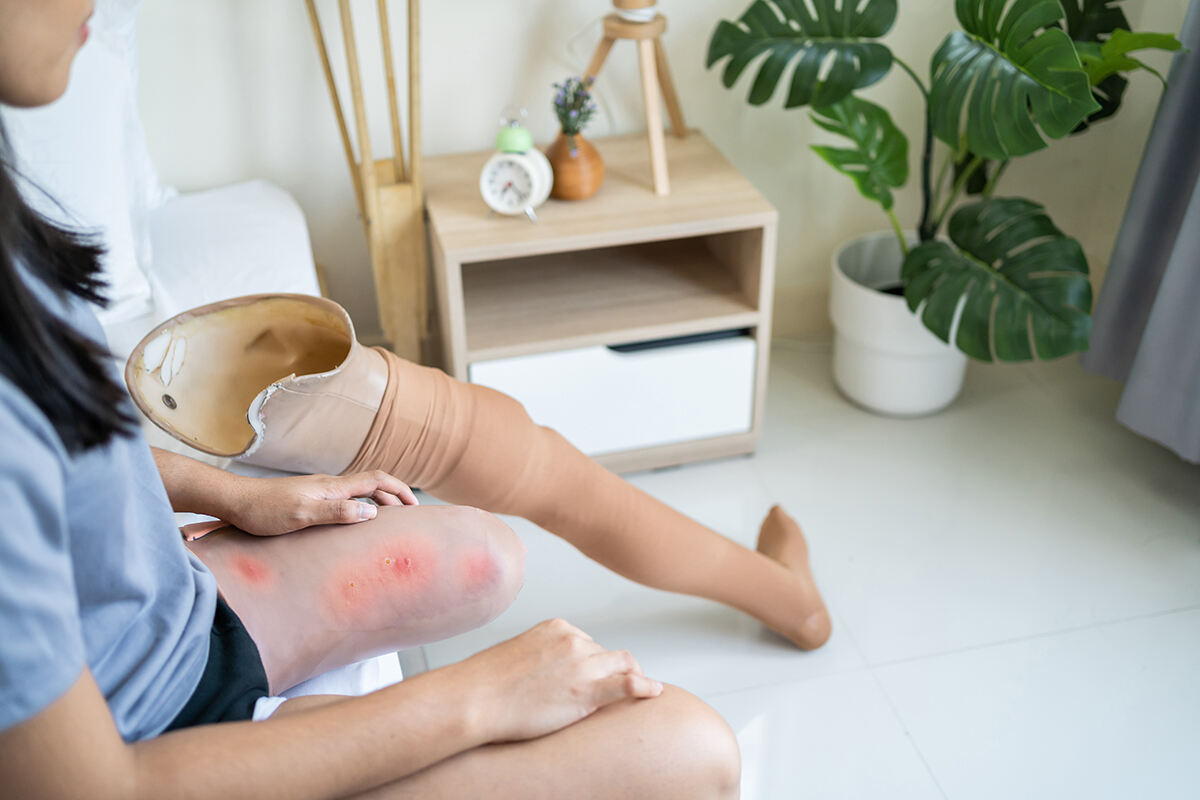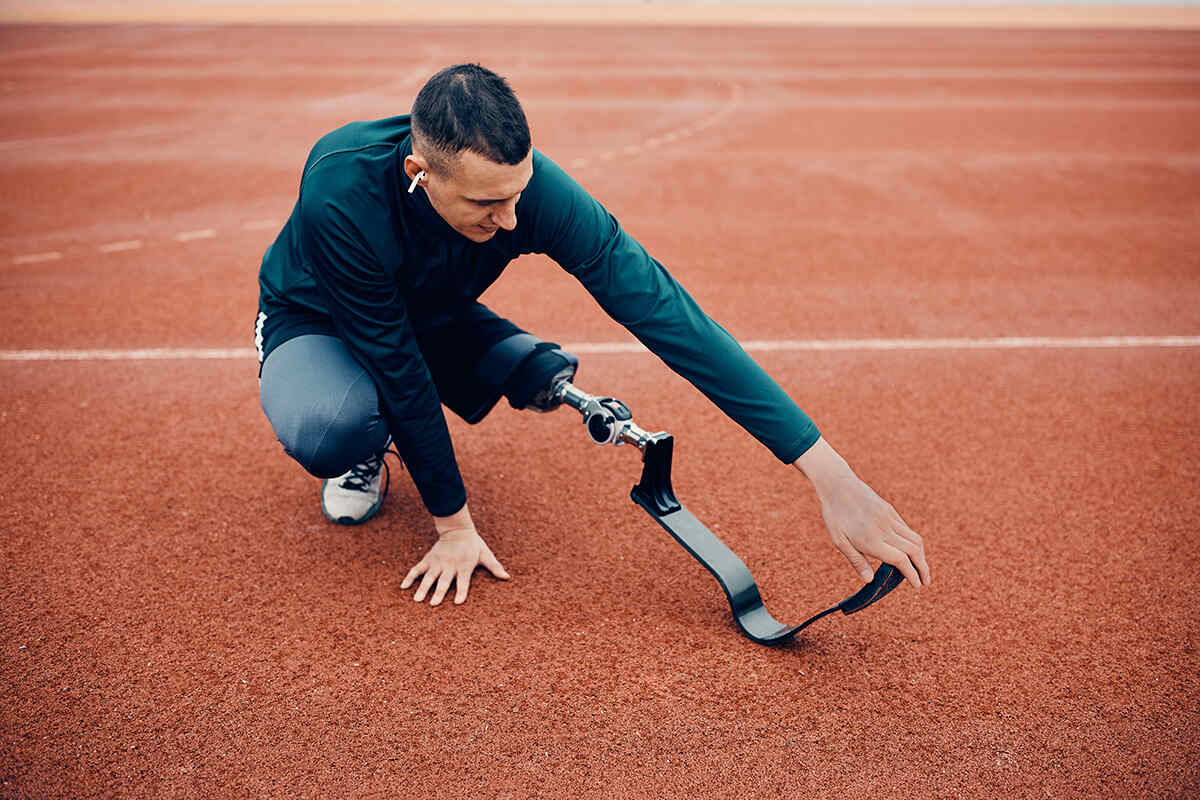In this guide, we explore options, from body-powered to myoelectric arms, zeroing in on the functional benefits without overlooking costs and personal adaptation. Ready to discover the best fit for your lifestyle? Read on.
Key Takeaways
- There are three main types of above elbow prosthetic arms – body-powered, myoelectric, and hybrid systems – each with unique features tailored to different needs, lifestyles, and activity levels.
- The functionality and comfort of an above elbow prosthesis are significantly influenced by the design of the elbow joint and the customization of components like the inner socket, suspension systems, and terminal devices.
- Advancements in technology, including sophisticated devices and future innovations involving AI and 3D printing, are enhancing the quality of life for individuals with upper limb loss, while proper care and maintenance of prostheses ensure their longevity and user comfort.
Exploring Above Elbow Prosthetic Arm Options
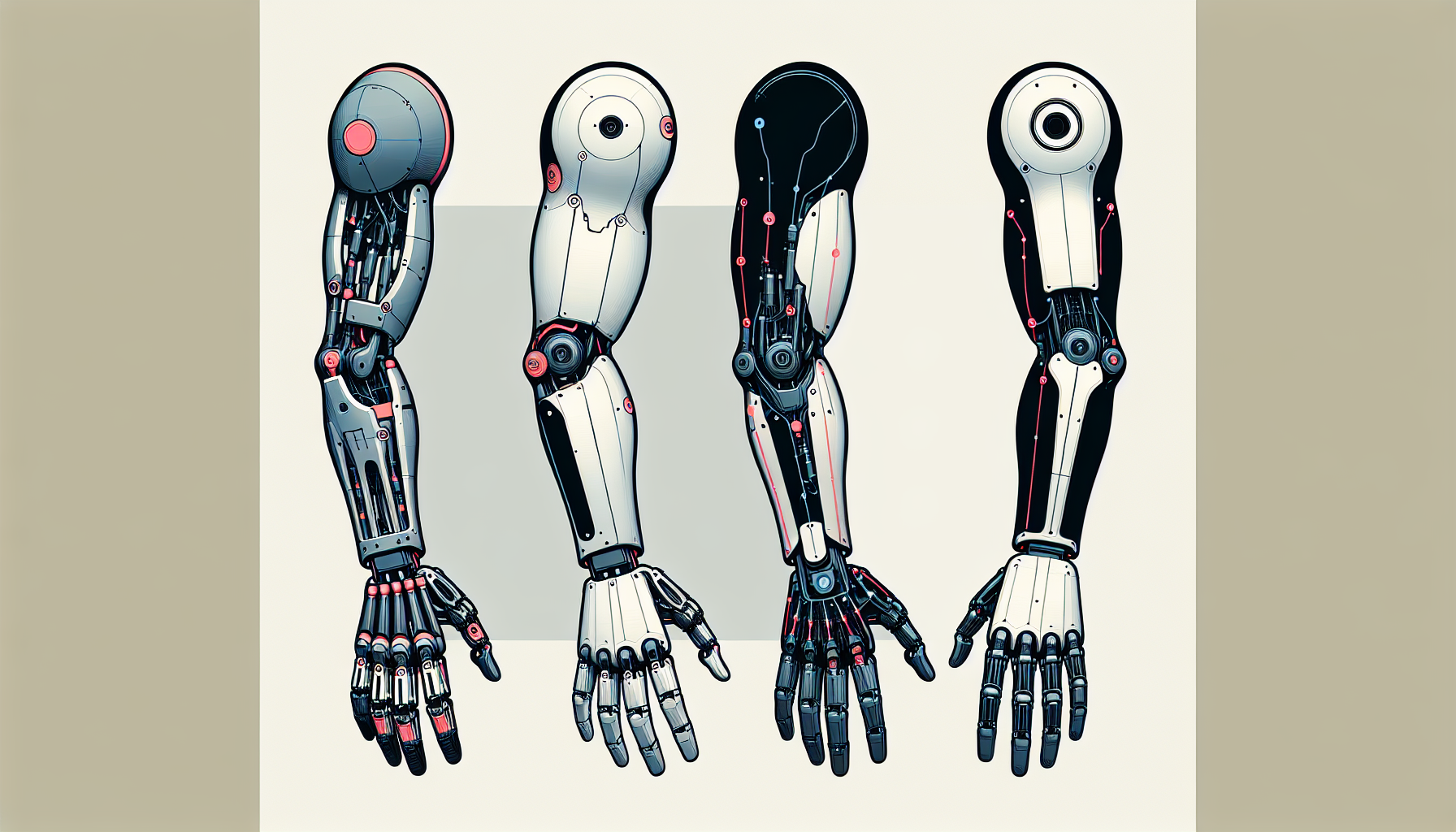
For those undergoing an above elbow amputation, their quality of life can be significantly influenced by the type of prosthetic arm they choose. Understanding the available prosthetic options and how they align with individual needs is paramount. Broadly, there are three types of prosthetic arms: body-powered, myoelectric, and hybrid systems. Each type comes with its strengths and limitations, and the choice largely depends on the individual’s lifestyle, activity level, and personal preferences.
Body-Powered Prostheses
The simplicity and durability of body-powered transhumeral prosthesis have earned them recognition. They use a shoulder harness system, manipulated by body movements, to control a body-powered elbow and a myoelectric terminal device. This combination enables the user to pick up and grasp objects.
Although reliable, one downside to body-powered prostheses is that they may necessitate exaggerated movements and considerable energy input, which could result in fatigue and discomfort.
Myoelectric Prostheses
The functionality of myoelectric prostheses closely resembles natural movement. They operate by using small electric motors controlled by muscle signals from the remaining muscles. These signals are then translated into movement, allowing the user to perform tasks with greater ease. Myoelectric prostheses can provide increased grip strength, better adjustment to prosthesis usage, and successful execution of upper limb functional tasks.
Nevertheless, their steep price may pose a barrier to accessibility and affordability.
Hybrid Systems
Hybrid prosthetic arms meld the strengths of both the previously mentioned types. They combine the strength and control of myoelectric devices with the immediate feedback of body-powered systems, providing enhanced functionality. Hybrid prostheses enable the simultaneous control of multiple prosthetic components, making them particularly advantageous for individuals with extensive limb loss.
The Role of the Elbow Joint in Prosthetics
Despite often being overlooked, the elbow joint has a significant role in prosthetics, especially in cases of elbow limb loss. It mimics natural arm movement and provides stability, making it integral to the prosthetic arm’s function.
The elbow joint’s design and technology significantly influence user mobility and control of the prosthetic arm, contributing to a more natural movement.
Types of Elbow Joints
A variety of elbow joints, including stainless steel external elbow joints and automatic joints, can be integrated into above elbow prostheses. Each type of joint has its unique operating mechanism and offers different advantages.
For instance, polycentric elbow joints provide enhanced stability with their multiple pivot points, while hydraulic elbow joints use fluid pressure to regulate movement, providing a more seamless motion.
Achieving Natural Movement
Prosthetic elbow joints help users achieve natural movement and improve daily function. They simulate natural movement through locking, mimicking natural movement, or rotating 360 degrees. The mobility of the residual limb can also be leveraged for enhanced control.
With the right joint, users can experience:
- a more natural walking pattern
- simplified clothing management
- decreased requirement for trunk displacement
- the ability to transmit tactile sensations directly to the user’s natural bone structure.
Customizing Your Prosthetic Arm
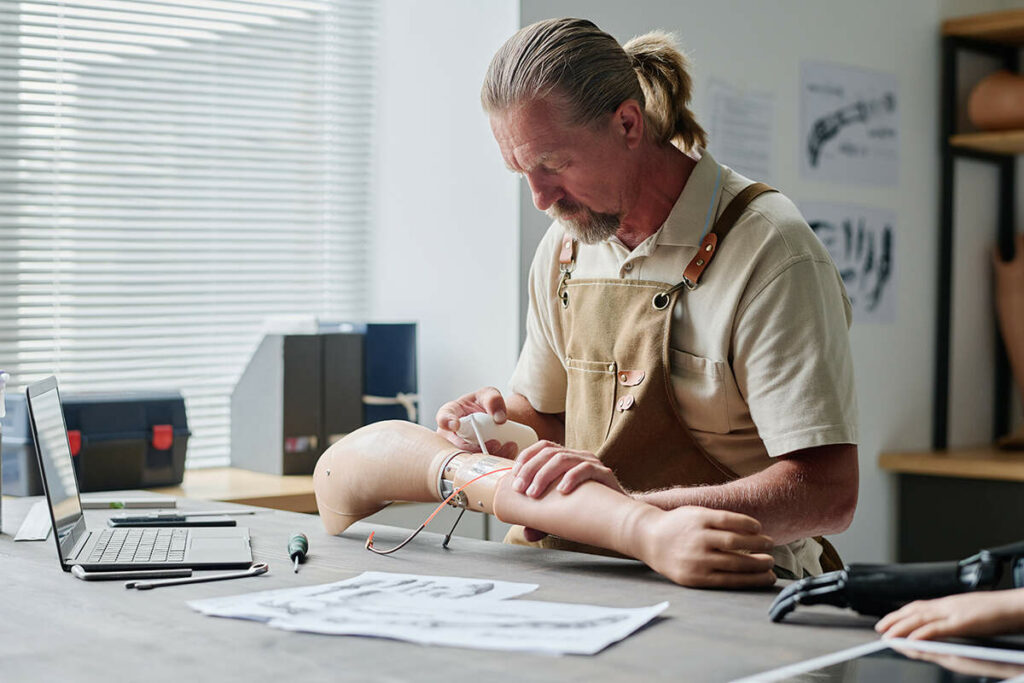
Tailoring your prosthetic arm to your needs is a key step towards achieving comfort and functionality. From the inner socket design, which directly impacts the fit and comfort, to the suspension system that defines mobility, and the terminal device that interacts with the world, every element can be tailored to your specific needs and preferences.
Inner Socket Design
The design of the inner socket has a direct impact on the comfort and functionality of a prosthetic arm. Choosing between flexible or rigid materials, each offers different advantages. Flexible sockets provide comfort due to their soft texture, while rigid sockets offer stability and precise fitting.
With advancements in technology, there’s now the possibility to improve sweat absorption and channeling inside the socket liner.
Suspension Systems
Different suspension systems, including suction, self-suspending, and belt-based systems, offer varying benefits and drawbacks. Harness-based systems provide support and stability but require the user to possess the requisite strength and full range of motion.
Self-suspending systems offer suspension across the entire range of motion but may limit mobility at the proximal joint.
Terminal Devices
Acting as the interactive component of the prosthesis, terminal devices empower the amputee to carry out a range of tasks. They can be customized to accommodate individual needs, from prehensile devices for grasping and holding objects to specialized devices for recreational activities like photography or fishing.
Enhancing Control: Prosthesis Management Techniques

Control and functionality of your prosthetic arm can be improved with the application of effective prosthesis management techniques. Training plays a critical role in improving control and functionality, while external power sources provide the necessary energy for movement, thereby improving control over the prosthetic arm’s components.
Training with Your Prosthesis
To maximize control and independence in daily activities, training is indispensable. Exercises that focus on proper body mechanics, balanced posture, and strengthening residual muscles can assist in achieving more natural and intuitive movements. Moreover, adjusting the elbow rotation with friction devices and ensuring proper socket alignment can enhance control and load bearing.
Utilizing External Power Sources
The functionality of above elbow prosthetic arms can be greatly enhanced by external power sources like electric motors. They provide the energy required to move the elbow, wrist, and fingers, reducing the necessity for harnessing and allowing the prosthesis to function without direct input from the amputee.
Daily Life with an Above Elbow Prosthesis
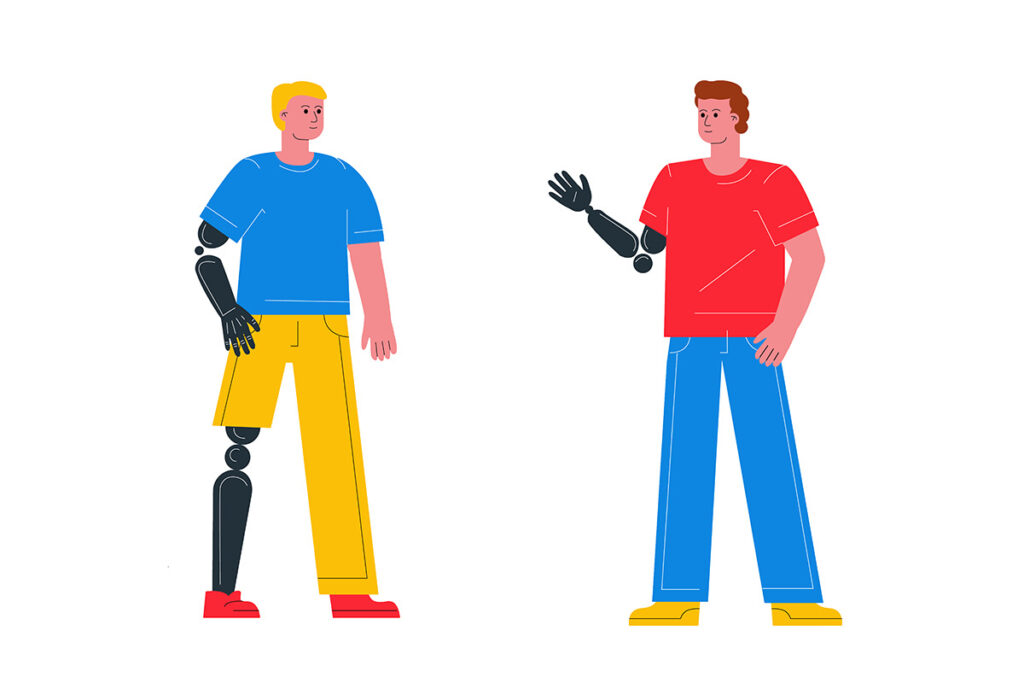
Adjustments and coping strategies are required when living with an above elbow prosthesis. From personal stories of individuals who have successfully adapted to their prostheses, to practical tips for everyday activities, this section offers insights into the daily life of above elbow amputees.
Tips for Everyday Activities
Everyday activities can be navigated with greater ease using practical tips. Here are some examples:
- Use foam tubing or products such as Eazyhold Grip to assist with personal grooming tasks.
- Explore strategies for two-handed gaming interfaces.
- Learn life hacks involving the sound hand, residual limb, or prosthesis to help proficiently operate computers and smartphones.
Innovations in Upper Limb Prosthetics
The field of upper limb prosthetics is always advancing. Recent years have seen major progress, with innovative developments transforming the industry. However, the journey doesn’t end here.
The future promises even more exciting developments aimed at enhancing the quality of life for individuals with upper limb loss.
Future Trends
Looking ahead, the future of upper limb prosthetics is exciting. The development of multi-functional, self-identifiable, durable, and intuitive prostheses is on the horizon. Technologies like augmented reality, AI, and 3D printing hold the promise of dramatically improving the user’s overall experience.
Prosthesis Care and Maintenance
Ensuring the longevity and comfort of your prosthesis hinges on its proper care and maintenance. From cleaning and skincare to regular check-ups and adjustments, every step contributes to ensuring your prosthetic arm remains in optimal condition.
Cleaning and Skincare
Maintaining healthy skin is paramount while using an above elbow prosthetic arm. Regular cleansing with mild soap and inspection of the skin for signs of pressure or poor socket fit can prevent irritation and discomfort.
In addition, using aids like foam tubing or Eazyhold Grip can assist with personal grooming tasks.
Regular Check-ups and Adjustments
Keeping your prosthetic arm in optimal condition necessitates regular check-ups and adjustments. Periodic evaluations of the prosthesis fit, function, and overall performance can help detect any issues early and ensure any necessary modifications are made promptly.
Frequently Asked Questions
What do we call a prosthesis that replaces an arm above the elbow?
A prosthesis that replaces an arm above the elbow is called a transhumeral prosthesis. It connects to the body above the elbow but below the shoulder.
What is the use of above elbow prosthesis?
Above elbow prostheses are used to replace an amputated arm at or above the elbow, typically after trauma, cancer, or other medical conditions. They help individuals regain function and mobility after such amputations.
Is an above the elbow bionic arm able to control every finger?
Yes, an above elbow bionic arm can control every finger through a prosthesis attached to the skeleton and neuromuscular system after surgical reconstruction of the residual limb.
What is transhumeral above elbow?
A transhumeral prosthesis helps replace the function of a missing anatomical segment from below the shoulder to the hand, and is worn by upper elbow amputees to substitute for the loss of functions of the upper limb.
How can I customize my prosthetic arm?
You can customize your prosthetic arm with different socket designs, suspension systems, and terminal devices to meet your specific needs and preferences. Choose the options that best suit your lifestyle.


